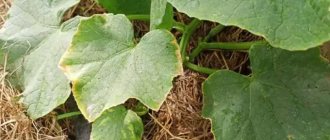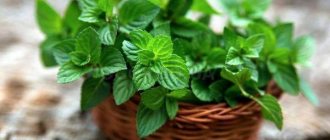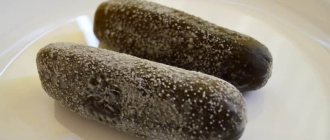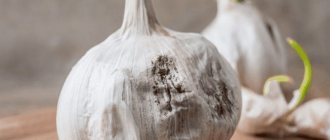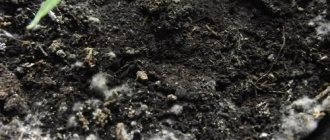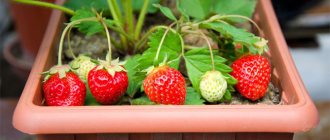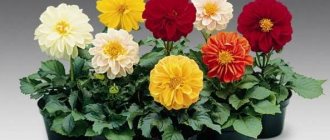When growing indoor plants - flowers, ornamental trees, exotic fruits - sometimes white spots appear on the surface of the soil or on the pots themselves. They can be barely noticeable or cover the soil with a dense cover.
It is necessary to understand the reason for the appearance of white plaque and determine methods to eliminate the problem.
- 5.1 Folk remedies
Reasons for the appearance of white plaque on the ground in flower pots
There may be several reasons why the soil in a pot becomes covered with a white coating. It should immediately be noted that failure to follow the rules of care, especially watering, is a source of problems with the well-being and appearance of indoor plants.
Among the most common reasons why the soil is covered with a white film are the following.
- Incorrect watering, as mentioned above. Alternating drying out and excessive moisture, or frequent watering with a meager amount of water, in which only the top layer of soil becomes wet, and the roots remain dry.
- Too high or low humidity , especially in combination with fluctuations in room temperature.
- Unsuitable container for the plant. In a pot that is too small, as well as in a pot that is too large, the root system does not develop properly and cannot absorb the required amount of nutrients and minerals.
- Stagnation of water in a pot (due to lack of drainage) or in a tray can also cause white deposits to appear.
Signs and causes of plaque
Most often, plaque is a colony of fungal microorganisms. Fungal spores fall from the air into the soil, where they actively begin to multiply, after which the surface layer of the soil becomes covered with white mold (sometimes it looks more like yellow - this depends on the strain of the mold. Often the coating from the soil spreads to the inner walls of the containers in which your seedlings are growing.
Fungal spores are present in the air, but they begin to multiply only when they find themselves in an environment favorable to them. The following factors favor them:
- Excessive air/substrate humidity.
- Poor lighting.
- Temperatures below 20 degrees Celsius.
The second option for covering the ground with a white coating is efflorescence, that is, small crystals of salts. It manifests itself only in the soil and does not spread to the walls of pots. It is easy to distinguish it from mold: it is harder, and when you try to knead it, it simply crumbles. If you look closely, you can see the crystalline structure.
Here's what causes it to appear:
- The pot is too large or simply overwatered. In this case, the plant does not have time to absorb the entire volume of water, the moisture evaporates, and the salts contained in it are drawn to the surface.
- Use for irrigation of hard water.
- Dry indoor air.
- Lack of drainage holes in the container.
- Excess fertilizer.
Types of deposits on the ground
Most often, white plaque on the ground in flower pots is:
- efflorescence on the ground;
- fungal diseases.
A thin layer of salt forms on the soil surface if there is an excess of minerals:
- in a large pot, the root system simply does not have time to “take” all the microelements from the ground, they appear on the surface with water;
- in case of an excess of microelements: for example, the soil for seedlings is additionally enriched with nutritional and chemical compounds. If you plant an adult plant in such soil that does not need such intensive feeding, the excess minerals will appear in the form of salts on the ground.
- if you get carried away with applying fertilizers, especially potassium ones, they are not absorbed by the plant and produce a salt deposit.
Fungal infections with a white coating:
- powdery mildew;
- mold fungus mucor;
- blue;
- black mold;
- actinomycetes are soil inhabitants that are both fungi and bacteria.
Fungal infection
In this case, the white color of the plaque is given by spores - microscopic “seeds” of fungi. Spores are easily carried by the wind, and can also be carried on the hands of the grower from other infected plants.
Very rarely, at home, a white coating on the soil can be caused by an invasion of aphids, which secrete a sticky substance - honeydew.
The solution depends on the problem
Before taking action, you need to understand what mistake was made in caring for the flower. Hard water can be softened with citric acid in a proportion of 0.5 teaspoon per 1 liter of water. If the flower is planted in a pot that is too large, it should be replaced with a container of suitable capacity.
Purchased soil is often oversaturated with fertilizers, which also leads to the deposition of salts on the surface. In this case, the top layer of soil must be removed and a regular leaf substrate added instead.
Special preparations will help cope with fungal spores. It is necessary to treat the soil with foundationazole in a ratio of 2 g per 1 liter of water. If affected by rot, the flower must be transplanted into fresh soil treated with a fungicide.
It is recommended that all soil, even purchased in a store, be calcined before use. It is convenient to do this in a microwave oven.
It is useful to loosen the soil frequently to provide the roots with access to oxygen. If the soil is too heavy, then replanting into a loose substrate or partial replacement of the soil directly in the pot is necessary. It must have drainage holes.
How to treat?
What to do to combat white plaque on the ground in pots will depend entirely on the cause of the whitening of the ground. Below we discuss options for getting rid of soil salinity.
Mulching with expanded clay
If you find white soil in flower pots, the top layer of soil should be removed and replaced with a layer of fine expanded clay. In addition to the mulching effect (to slow down the evaporation of moisture), it will also serve as a decorative design for the plant. Decorative pebbles, disinfected bark, and coarse quartz sand are also suitable for these purposes.
Soil waterlogging
When air humidity is more than 80% and constant high temperature (more than 25 ° C), the soil in indoor flowers can also turn white from the appearance of crystals of mineral salts. Accordingly, when these parameters are lowered, the problem disappears by itself.
Oversaturation with fertilizers
If there is an excess of mineral fertilizers in the soil for indoor plants, as mentioned above, they are not completely absorbed by the plant; some of them crystallize on the surface. The solution to the problem is to stop feeding. For an aesthetic effect, the top layer of soil from the pot can be removed and replaced with fresh one.
Oversaturation with fertilizers
Preventive measures
Using these tips, you can avoid the appearance of a white coating on the surface of the soil in flower pots:
Be more careful about watering. Do not start a new one while the top layer of soil is still wet from previous watering. Otherwise, you will simply oversaturate the soil with water and it will begin to stagnate. All this will lead to negative consequences for the flower;
Provide your plant with good drainage. To do this, the pot must have special holes at the bottom - this will help avoid stagnation of water in the container. Otherwise, it will lead to the appearance of fungus and mold. Also, before laying the soil, it is necessary to put a layer of expanded clay on the bottom of the container;
- Do not forget to periodically loosen the soil in the pot. This will make it more permeable to air, making it easier for the plant to breathe;
- For preventive purposes, it is recommended to water the soil with a solution of potassium permanganate once a month. This is to disinfect the soil from manifestations of the fungus;
- Don’t forget to regularly ventilate the room where the plants are located;
- The soil for planting must be of high quality; it is better to buy it ready-made in the store. But pay attention to the composition and its main purpose - the soil for seedlings is not suitable for adult plants;
- Use expanded clay as mulch. If it is not there, then you can replace it with river sand, or, in extreme cases, charcoal.
Now you have found out the reason for the appearance of white plaque in flower pots. Most of these reasons are associated with incorrect agricultural techniques, this is especially typical for beginning gardeners.
Therefore, if you provide your flower with proper care and the required conditions, you can easily avoid the appearance of plaque on the ground in your pots. And you can grow a wonderful, beautiful, and most importantly healthy flower.
Currently reading:
- Choosing cucumbers for open ground according to your preferences
- Proper cultivation of Adenium succulent with your own hands
- Description of 12 types of late cabbage varieties for planting
- Three methods of propagating and replanting a dollar tree
Popular: Tips on what to do if the leaves of tomatoes begin to curl
Share the news on social networks
About the author: Lyudmila Vasilievna Nosikova
Agronomist of the state agricultural enterprise "Garovskoe" of the Khabarovsk region of the Khabarovsk Territory.
Mold Control Products
Regardless of the type of harmful fungus that has settled in the pots, the principles of control will be the same.
Folk remedies
The means at hand will help get rid of the white coating on the soil at the early stage of mold infection, when the mycelium has not yet had time to grow into the deeper layers.
- Garlic has excellent fungicidal and disinfectant properties. You can dig a few peeled cloves into the soil or water the ground with infusion (pour 3 crushed cloves with a glass of boiling water, leave for a day).
- For plants that prefer acidic soils , watering with a solution of citric acid (no more than 3 g per 200 ml of water) can be recommended. This treatment should be carried out no more than 1-2 times a month.
- Ash, on the contrary, alkalizes the soil, improves its structure and oxygen saturation. Depending on the size of the pot, 1-5 tbsp. l. ash is added at the root and gently mixed with the top layer of soil.
Purchased funds
If the soil in flower pots turns white due to the development of pathogenic mold fungi, then changing the soil is no longer possible; folk remedies are not always effective. You will have to resort to the help of fungicidal drugs, which suppress the growth of microflora.
To get rid of mold in flower pots, the following chemical fungicidal preparations can be recommended.
- Azofoska is a domestic drug, an active ammonium-copper-phosphate compound. The working solution is prepared according to the instructions and sprayed on the plant and soil. The composition is also a foliar fertilizer for plants, providing the required amount of nitrogen compounds, copper, calcium, phosphorus, etc.
- Topsin M is a systemic fungicide, jointly developed by Japanese and German chemists. The active toxin is methyl thiophanate. Used for spraying and watering the soil under the plant.
- Sarfun 500 SC is a product manufactured in Poland. The active substance is carbendazim. Systemic highly effective fungicide, used for spraying, compatible with almost all chemicals.
Advice! To be sure to get rid of white mold deposits on the soil, carefully read the instructions for the drug, which describe how to prepare and use it (concentration, frequency of treatments, precautions, etc.).
Azofoska
Popular folk remedies
If the mold has appeared recently and the lesion is small, you can do without strong chemicals. So, to treat the soil, gardeners use a weak solution of citric acid: 2-3 grams per glass or just lemon juice (squeeze the lemon into a cup of water). The plant should be watered no more than twice a month. This product is suitable for flowers that can grow in acidic soil.
Sometimes ordinary garlic is used for disinfection. To do this, several cloves are buried near the plant or an infusion is made. When watered, garlic saturates the soil with phytoncides, which suppress the development of pathogenic bacteria.
Proper care will help get rid of mold.
Adding wood ash to the soil, treating with potassium permanganate, and spraying with a solution of dry mustard also has a positive effect.
Prevention
To prevent the appearance of white plaque in flower pots, you should adhere to simple rules of home gardening.
- It is necessary to ensure drainage in pots (plant pots). To do this, expanded clay, pebbles, and fine gravel are poured onto the bottom (about a quarter of the height of the container with the plant). Drainage is necessary to remove excess moisture from the roots.
- Optimal watering. It is necessary to water indoor plants when the soil dries to a depth of 3 cm. Wait until water begins to come out of the drainage holes. Sometimes, instead of watering, you can use spraying or deep loosening of the soil.
Advice! It is better to dry out the soil in the pot than to over-water it!
- The composition of the soil must be balanced for a particular plant. In general, we can say that indoor flowers love loose, low-fat substrates, so adding sand, vermiculite, etc. to the soil mixture will not be superfluous.
- You should not get too carried away with mineral fertilizing, especially in the winter season , when the growth and development of the plant slows down and it requires less nutrients.
- To normalize the soil microflora , you can periodically (1-2 times a month) water it with a weak solution of potassium permanganate and/or water acidified with citric acid or lemon juice.
- Ultraviolet light is a panacea for many diseases. Regular sunbathing will help make the plant strong and immune to various ailments.
Prevention of soil against white plaque (mold)
Overcoming fungus in a flower pot is not always easy; it takes more than one day; sometimes even a week is not enough. Therefore, it is always easier to prevent infection than to treat it later.
Prevention measures:
- Constant loosening of the soil, especially after watering. This will provide additional air supply and evaporation of excess moisture.
- Providing good and reliable drainage. This is one of the main conditions for planting a flower. It is important that it allows water to pass through well.
- The correct selection of flowerpots or pots. Pots should be selected depending on the shape and location of the roots.
- Feed regularly. High-quality fertilizers will help the plant withstand stress.
- Monthly treatment with a weak solution of potassium manganese. Potassium permanganate will disinfect the soil.
- Ventilation of premises. Plants need daily ventilation of the room, but this does not mean that drafts need to be created.
- Creating an optimal humidity level.
By following simple and simple tips, you can prevent the appearance of white plaque and fungi such as mold.
How to Replace Topsoil
If you do not regularly ventilate the greenhouse, various diseases appear in the soil, from greening of the soil to the growth of parasite larvae. Stagnant warm air contributes to this. Therefore, it is very important to ventilate the greenhouse even in cold weather.
If the soil is already diseased, then the top layer of soil needs to be replaced. What do I need to do? And how to replace it correctly without harming the plants?
The process of removing the top layer of soil occurs as follows:
- The soil layer is removed to a depth of 30 cm.
- After this, the soil is covered with lime.
- The lime is slaked with water only the next day.
- Thus, the soil is left for 3 days.
- The lime is then covered with whitewash.
- Only then can you cover it all with a new layer of soil.
You can mulch the soil with the following materials:
Soil preparation is carried out before mulching. Mulch previously prepared and loosened soil.
Water problems
Regardless of the type of indoor plants, there is a general rule for all flowers: for watering you should use only settled water, or even better, rain water. tap water passes through purification systems and is “enriched” with some elements that flowers do not like, for example, chlorine. In addition, it is too hard, so after watering, lime deposits appear on the surface of the ground. Externally, such soil looks like dry white granules; if you carefully remove them, you can see ordinary black soil underneath. This is usually what they do, removing the top layer and pouring fresh soil mixture into the pot.
To prevent the appearance of sediment, water the flowers only with settled water. You can soften it using a homemade filter by putting a little peat in a rag bag and lowering it into a container of water. Flower shops also sell special softening products.
To neutralize lime compounds, it is recommended to add lemon juice or kitchen acid (citric acid) to the water.
How to eliminate the attack
When the first signs of efflorescence appear on a flower pot, the ground should be lightly covered with expanded clay, flint or other small stone-like compounds that will prevent the spread of plaque. If white deposits appear on the expanded clay, then you need to carefully collect the dried sediment, rinse it under running water and return it back to the pot. The procedure will need to be repeated several times as new whitish layers form.
If efflorescence appears and quickly spreads throughout the pot, the following measures should be taken:
- Transplant the plant into a new pot with fresh, disinfected soil.
- Sprinkle fine washed and dried river sand onto the surface layer. After a few days, loosen the soil to provide air access to the roots.
- To avoid replanting, you need to remove as thick a layer of soil as possible from the surface of the earth, and add humus in its place.
- At the garden store you can buy a special preparation that has the ability to reduce soil acidity. It should be poured in a thin layer on the surface of the earth for several days in a row to disinfect the soil.
- Drying the soil may help. This is done by removing the top layer of soil and filling the voids of the pot with crushed activated carbon or sifted ash. In this case, it is necessary to loosen the soil daily. Over time, the additive will mix with the soil and it will be possible to cover it with a fresh layer of soil on top.
- You can spill the soil with foundationazole or other similar preparations.
Attention! To prevent flower plants from forming efflorescence on their pots, water the soil with aquarium water. This procedure should be carried out no more than once a month.
When the first signs of efflorescence appear on a pot of a home plant, you need to immediately take action and cure the flower. Depending on the extent of the spread of plaque, one or another method of control is used. At the initial stage, when white deposits are just becoming visible, they are easy to remove, but in advanced cases the plant often dies.
Overmoistening
With each watering, a small part of the moisture evaporates from the surface of the earth. If you regularly over-water the flower, the process will become more intense and a whitish salt coating will appear on the ground. The situation can be worsened by heavy, unloosened soil, a poorly organized drainage system and high indoor humidity.
To eliminate plaque, first reduce the frequency and intensity of watering. Also be sure to check the drainage (if the holes in the bottom of the pot are clogged, excess water will drain too slowly). In addition, do not forget to loosen the soil after each watering.
If these procedures are not carried out, over time the root system will begin to rot and the flower will die.
Why is mold dangerous for plants?
It is necessary to combat mold that appears on the ground immediately after detecting the first signs of damage. This fungus is very dangerous for plants and can lead to the following consequences:
- mold disrupts the process of plants absorbing nutrients;
- problems arise with the circulation of oxygen in the soil and, as a result, the roots of the plant suffer;
- fungus on the surface of the earth makes it difficult for moisture to evaporate and because of this, rotting of the root system begins;
- in advanced cases, the fungus can even lead to the complete death of the plant.
Mold on plants.

